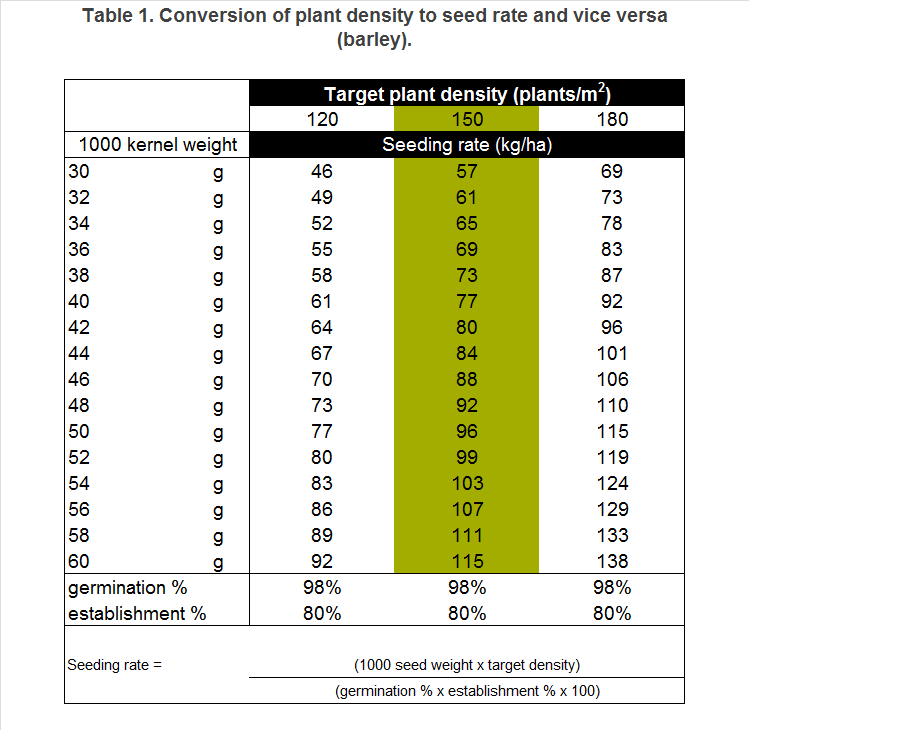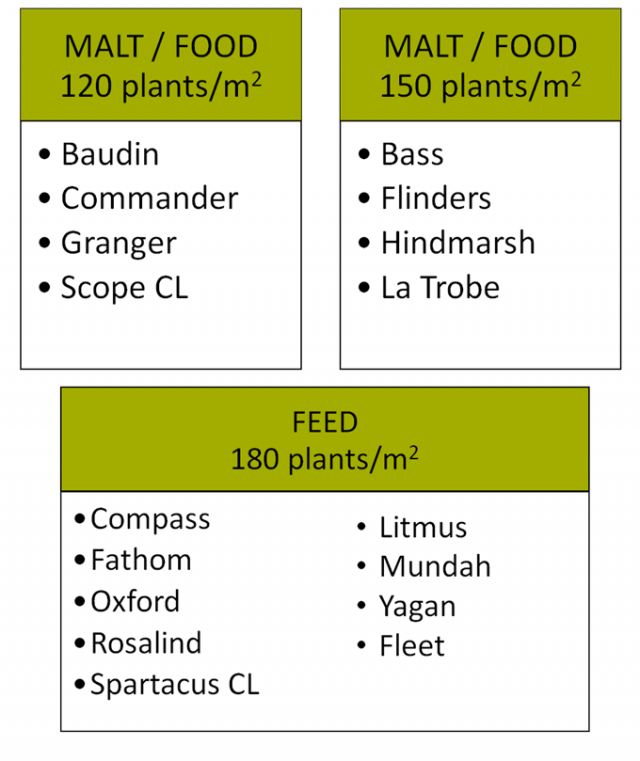In 2013, surveys carried out by the barley agronomy project found that only 15% of growers counted the number of established plants per metre to determine the plant density in their paddocks and potential yield from this density. In order to optimise your production we suggest you count your establishment (per square metre) to know if you are hitting your targets.
The recommended number of established plants (per m2) for food and malt varieties is either 120 or 150 plants/m2, depending on the variety you are growing (see Figure 1). For feed varieties, the suggested plant density is 180 plants/m2.

To achieve the correct plant density, the right seed rate should be applied. Selecting the most profitable seed rate for your variety comes down to knowing the 1000 kernel weight of your particular variety. To find out this figure simply count out 1000 grains from your particular variety. It's easiest to do this in lots of 20. You will need 50 lots of 20 grains. Once you have the 1000 grains, weigh them using your kitchen scales. Take this number and using Table 1 find the seed rate you will need to achieve the target plant density. If your expected germination is less than 98%, you will need to use the formula to convert kernel weight to seed rate in kilograms per hectare. The suggested plant density for commonly grown varieties can be found in Figure 1.
For more information see DAFWA Senior Research Officer Blakely Paynter's 2016 Research Updates paper How much does seed rate influence barley’s performance?


